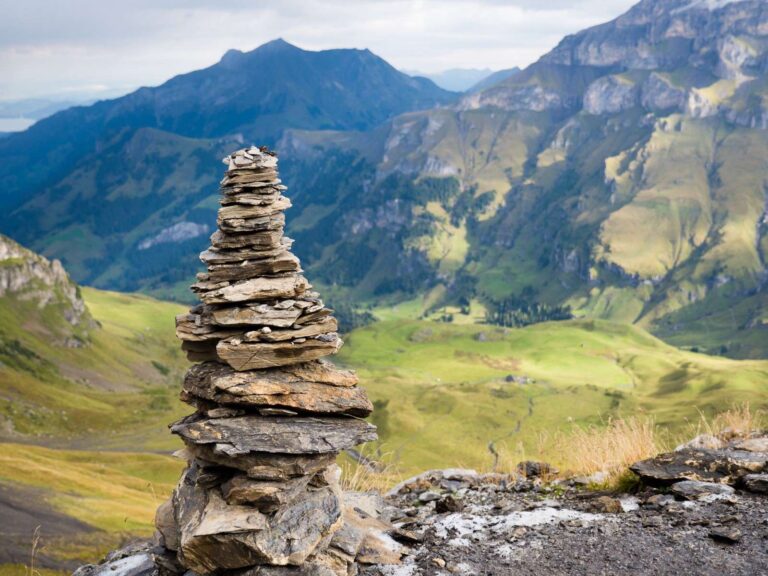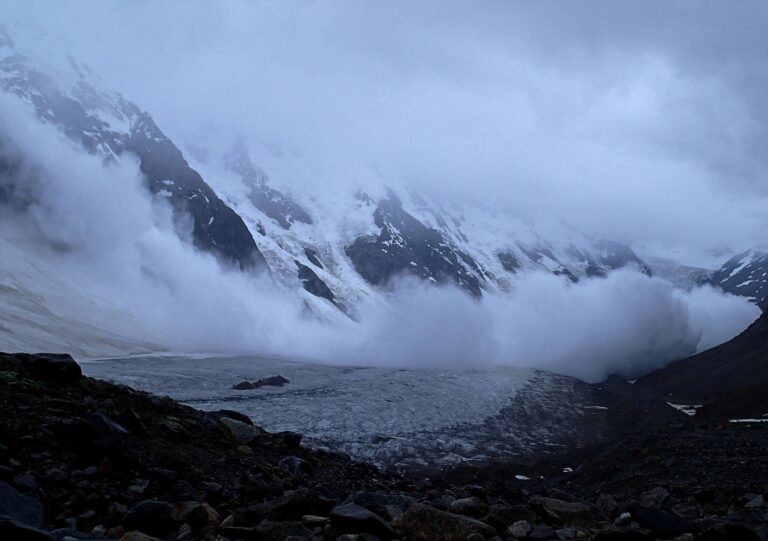Raindrops keep falling on my head…but knowing how to use waterproof spray on my gear means my eyes won't be turning red! In short, modern waterproofing rocks. We're able to march up mountains in gear that's both waterproof and fairly breathable. What a time to be alive.
Yet this waterproof-ability is a privilege, one that’s easily taken for granted. I've been guilty of it many times. There comes a moment every so often when I'm sporting one of my tried-and-true rain jackets and I notice that my shoulders suddenly feel a bit too cold and something wet has started trickling down my back. Sad acceptance washes over me as I realize my jacket is no longer waterproof, and I'm soon going to be sopping wet.
The antidote? Waterproofing spray and wash. Your rain gear needs to be kept waterproof — it simply won’t stay that way forever. That's why I keep waterproofing spray stored with my gear at all times. I'll touch up my rain jackets as needed throughout the year and give my backpacking gear a complete waterproofing overhaul from time to time. Living in the Pacific Northwest, it seems there’s always some rain on the horizon, and I’ve learned to be preventative with my care, rather than soaked.

In this guide, you’ll learn how to re-waterproof your gear and why waterproofing spray helps extend the longevity of your outdoor equipment.
Table of Contents
How to Use Waterproof Spray Video!
Why You Should Re-Waterproof Your Gear
Durable Water Repellent (DWR) is a chemical coating that repels water while retaining a fabric’s breathability, and it’s applied to most rainwear and, these days, most other outdoor gear as well. DWR works by increasing the surface tension of the fibers in your fabric, which keeps water from soaking into your gear and “wetting out”.
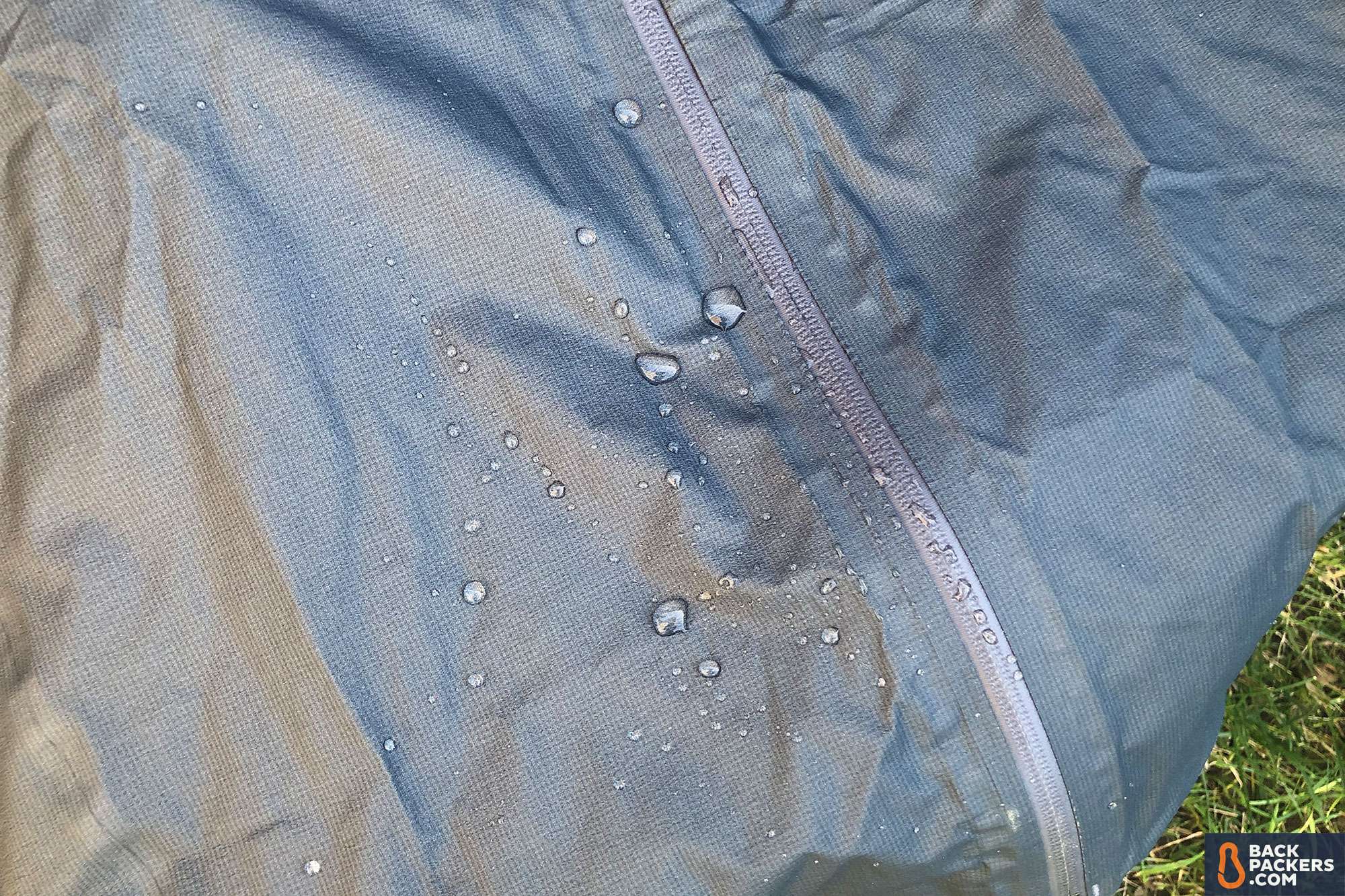
A good DWR coating causes water to bead up and roll off your fabric. A better DWR coating also includes solar protection from harmful ultraviolet rays, extending the effective life of your gear. When the DWR coating is damaged, you'll notice wet spots where water has started to leak through. These wet spots not only let in water where you don't want it, but they also eliminate the breathability of your fabric by filling it with moisture. This is the dreaded “wet out”.
Over time, every DWR coating, applied fresh before purchase, will degrade, reducing your fabric's ability to repel water. You'll notice first that your waterproof jacket begins to fail at locations that see regular movement or contact, like a jacket's shoulders and wrist cuffs — this is because DWR is easily destroyed by friction and abrasion.
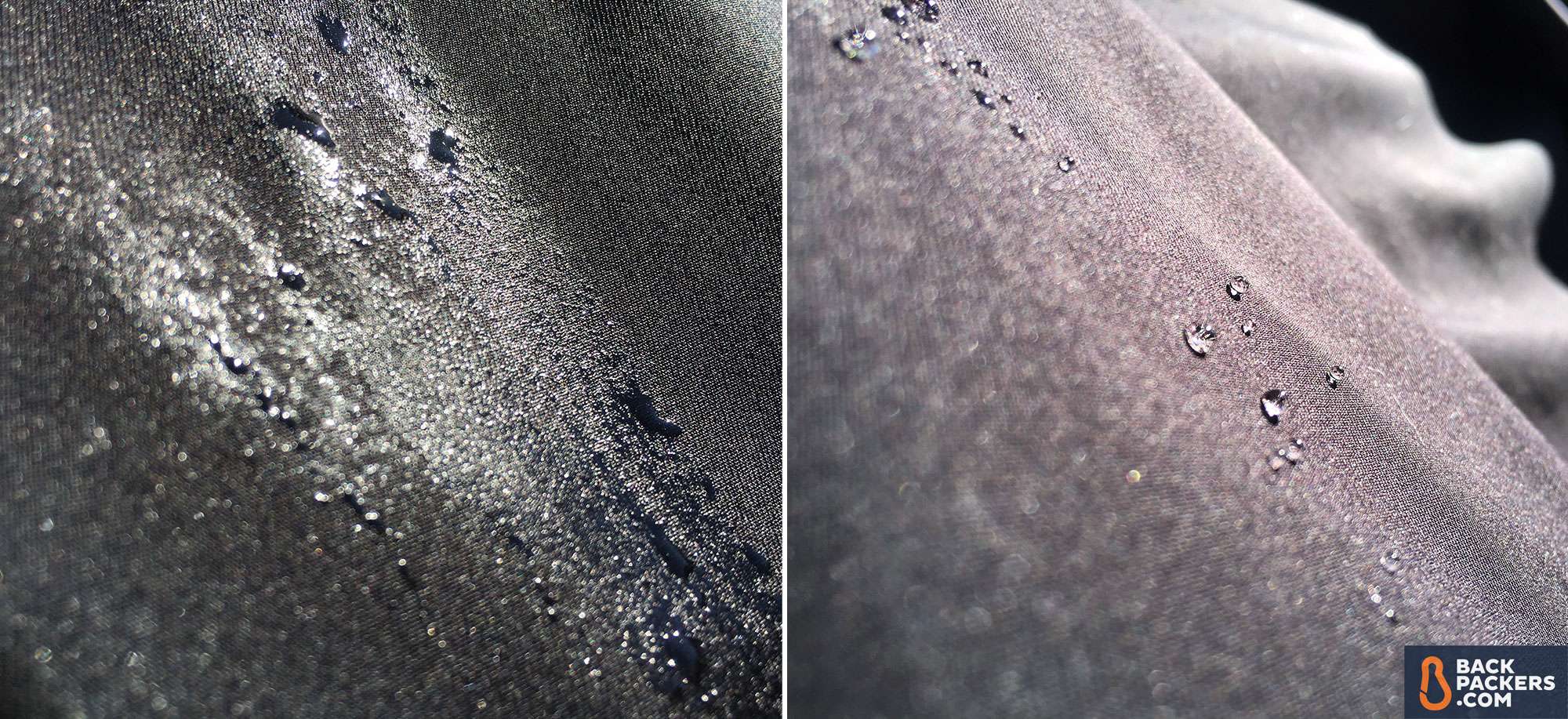
Dirt, movement, sunlight, and your washing machine are all working to break down the DWR on your favorite pieces of waterproof gear.
Read this loud and clear: No DWR coating is permanent. Re-waterproofing is required to extend the life of your water-repellant gear — unless you want to get sopping wet while wearing your rain jacket.
How to Re-Waterproof Your Gear
Here are the basic steps, which we break down in detail below:
- Clean your gear and test
- Decide to spot treat or treat the whole product
- Use waterproofing spray for most items
- Use wash-in waterproofing for select items
- Let dry
Wash Your Gear and Test Waterproofing
Follow the cleaning instructions as described on the care labels for your rain jackets, backpacks, tents, and anything else you want to re-waterproof. Take care to clean each item properly and thoroughly.
Sometimes, a good wash is all your gear needs to repel water again. Removing all that well-earned dirt and evaporated body sweat is essential to keeping your gear in good shape, and it'll keep you smelling good as well. You can take cleaning one step further by using detergents that are specifically designed for waterproof gear. These products may help prolong the time between reapplications of DWR.

After washing, test your gear in wet weather (or with a hose) to see if its water repellency has improved before continuing to the next step.
Once clean, decide whether you need to apply a fresh coat of DWR to the entire item or if you can simply spot-treat the fabric. As stated before, you may notice only certain parts of an item have degraded and need a touch-up. Are your jacket shoulders and tent seams the only spots that need attention? If so, just spray onto those areas (how to use waterproofing spray, below).
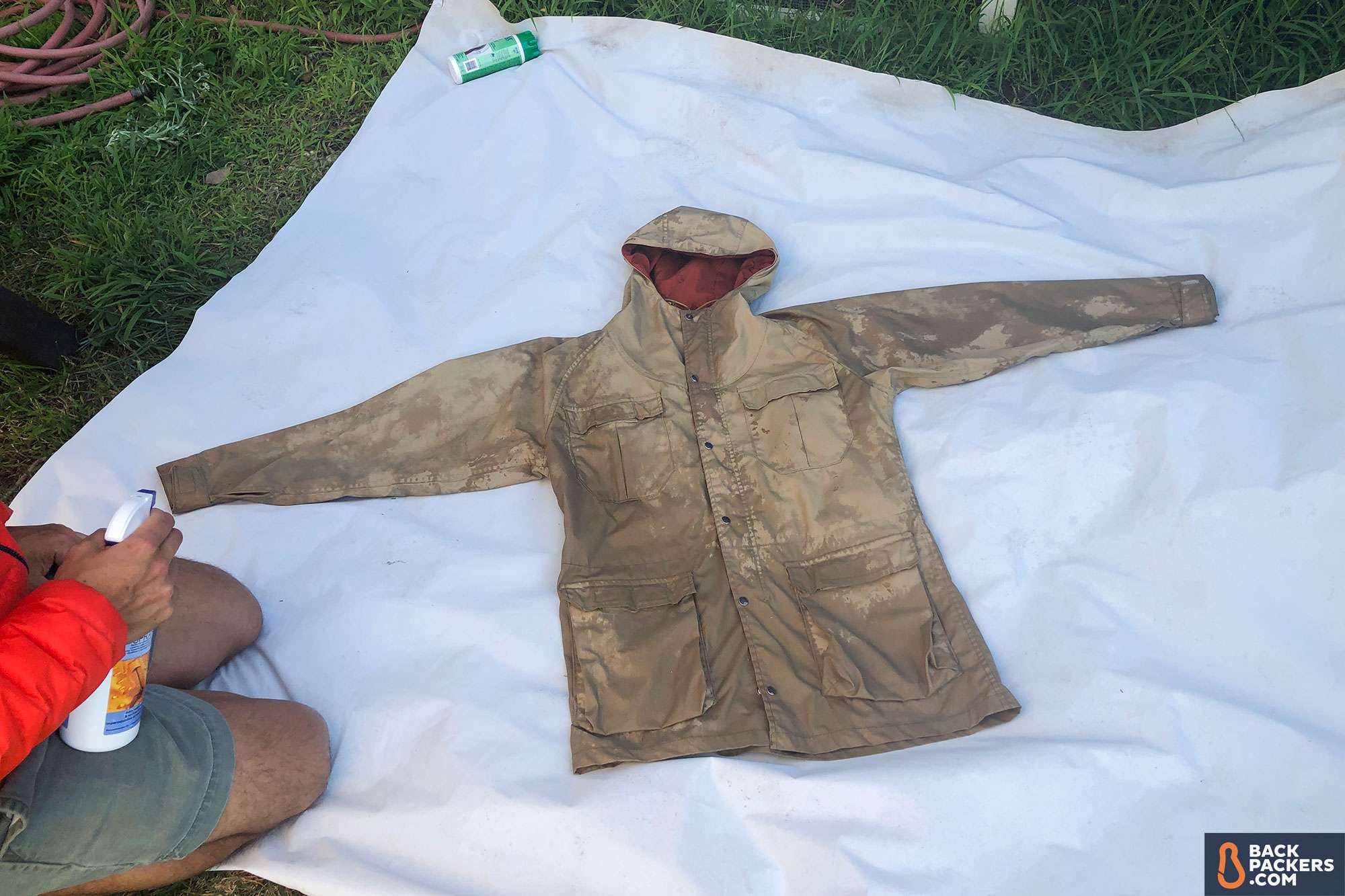
If the entire item needs treatment, you'll want to set up a protected area large enough to spray the entire item. I suggest using a tarp or piece of Tyvek. Wash-in waterproofing is another option, which we'll go over after describing how to use waterproofing spray.
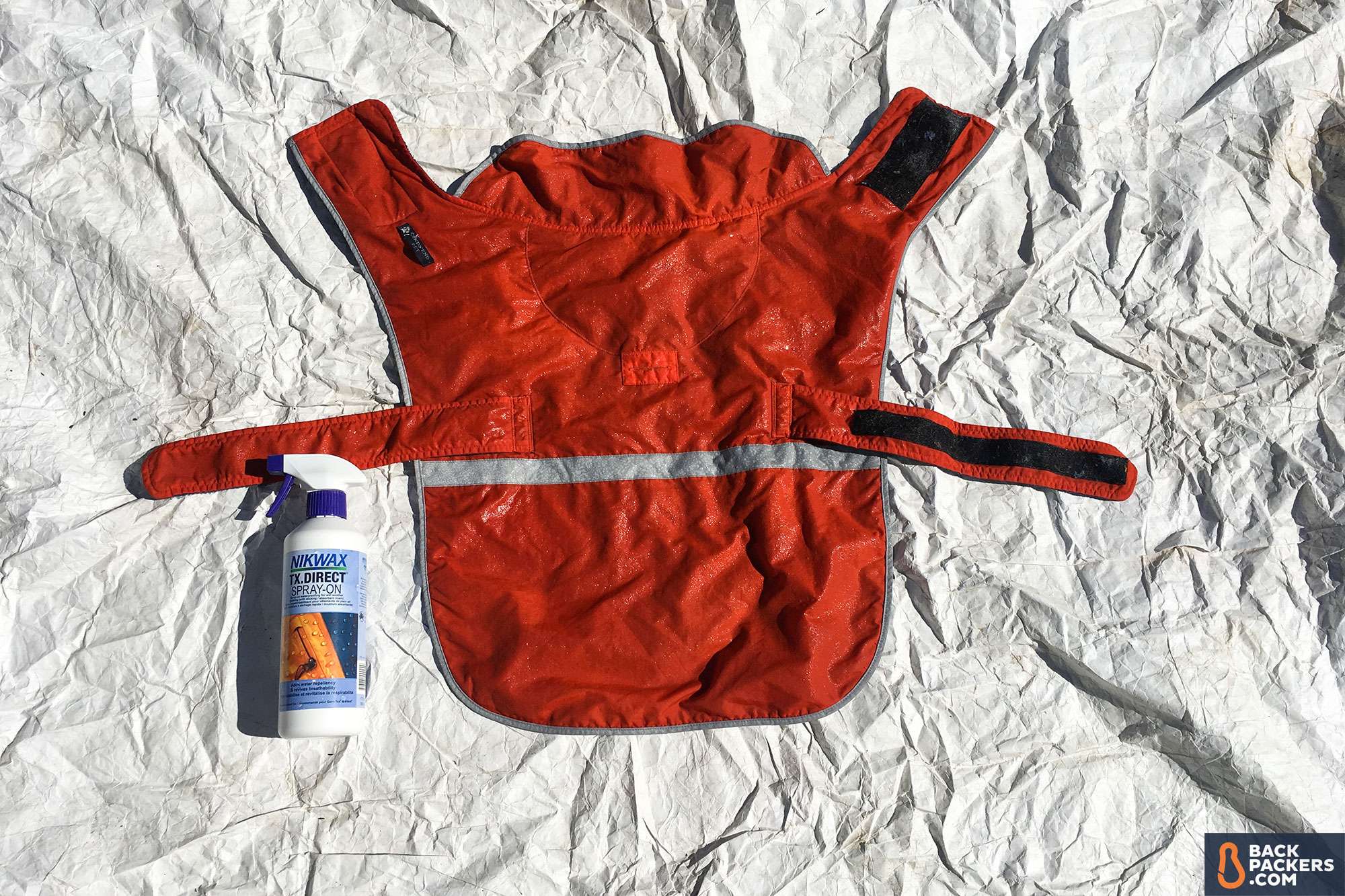
Use Waterproofing Spray for Most Gear
Waterproofing spray is best for multi-layered garments in which you only want to waterproof the outer layer — this applies to items like your rainwear, tent, backpack cover, and just about anything comprised of Gore-Tex or eVent. (You can use wash-in waterproofing for 3-layer rain gear garments, but this is usually overkill. We find waterproofing spray to get the job done in most cases.)
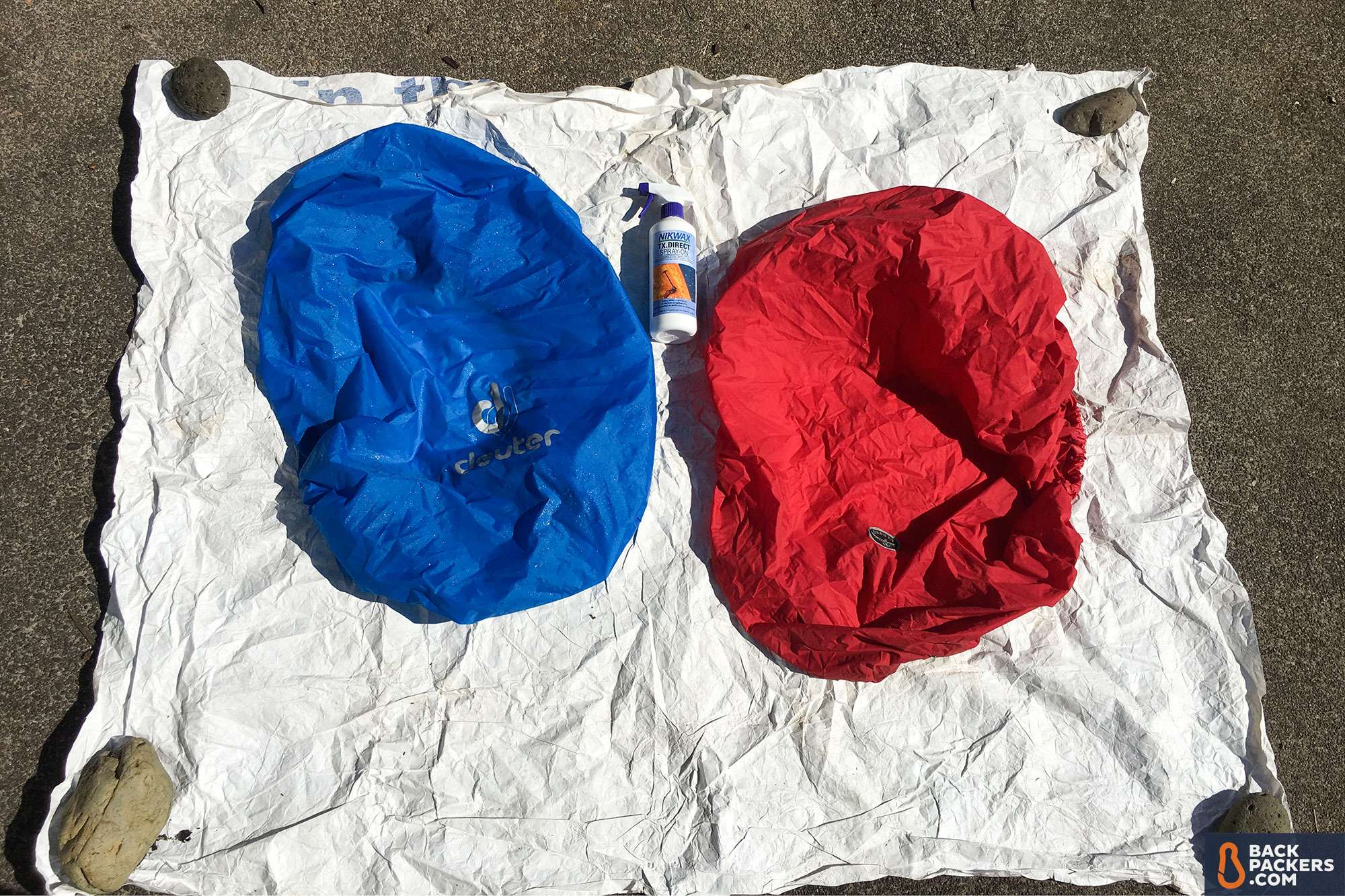
Now that our gear is clean, we can lay it out flat and spray it down with a DWR product like the Nikwax TX.Direct Spray. It doesn't matter if your garment is dry or wet as you apply the DWR; both work fine. Zip or button everything up so you don’t hit the inside of a pocket or jacket. Hold the spray bottle about six inches away from the fabric you want to waterproof and apply an even coating, making sure to reach under all of the fabric's flaps and folds.
Let the fabric dry for a couple of minutes, then remove any drips or puddles with a damp cloth.
Finally, ensure that you have completely covered every inch of your fabric in the new DWR waterproofing spray, then hang the gear up to dry. Check once again for any excess product and wipe it away. You can also tumble dry the item on low in your dryer if the gear care label allows.
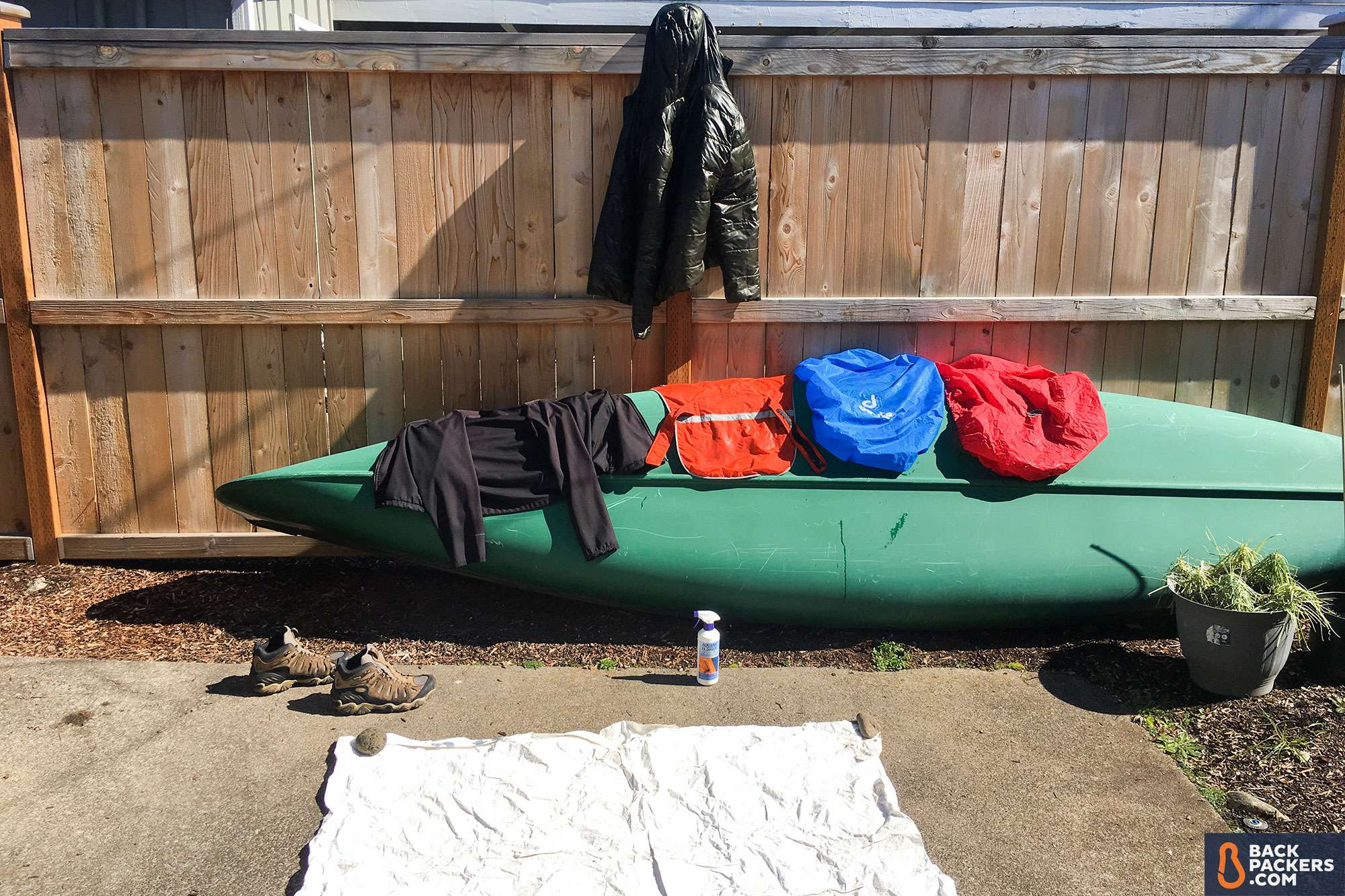
How to Use Wash-In Waterproofing
Wash-in waterproofing products, unlike the waterproofing spray, coat the entire garment with DWR right in the washing machine.
I use wash-in waterproofing on my fleeces. I don't want rain or sweat to cling to these fabrics. I also don't want spilled coffee to soak into my clothes, but no wash-in waterproofing product claims to be coffee-proof (semi-pro tip: it helps, though!).
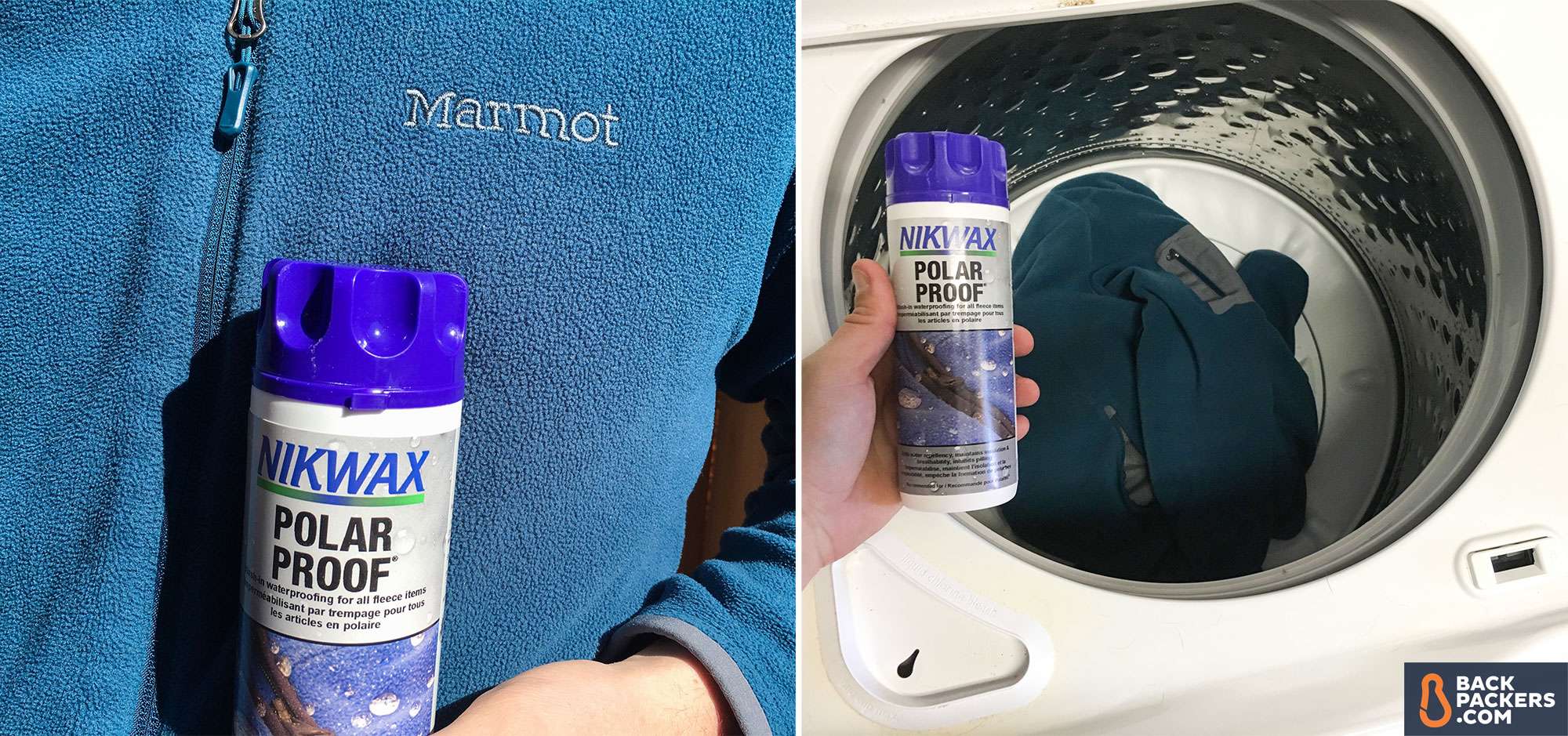
Each wash-in waterproofing detergent will have its own directions to follow. Don't worry, the process is no more challenging than doing your typical load of laundry.
Some wash-in waterproofing treatments require a low-dry cycle for the chemical to “seal” to the fabric, while others, like NikWax, don’t. Whatever product you use, make sure to follow through with the instructions to get the best DWR performance.
Making Down Water-Resistant Again
Down is a particularly convoluted subject in the “how should I treat this” conversation, mostly because a down jacket or down sleeping bag has shell fabric, similar to a rain garment, and then the down itself, which is inside the shell fabric.
In order to re-waterproof your down jacket’s shell fabric, follow the same waterproofing spray steps I laid out above. This will make the outer layer of your down gear waterproof again.
However, if you want to fully waterproof your down jacket, meaning make the exterior shell fabric and the down itself more waterproof, be sure to use a down-specific wash-in.
First, wash the down coat to get it clean, then wash it with a down-specific waterproof wash-in cleaner. Down cleaner is more gentle than most common detergents. Dirt and oil ruin the effectiveness of down insulation as much as they ruin the protective layer of DWR on the outside of the gear.
A proper down detergent will revive the fluffiness of down insulation and extend the water resistance of treated down. Always follow care label instructions. You can throw in a couple of clean tennis balls into the dryer to help wet clumps of down break apart.
Footwear Fabric and Leather Waterproofing
You can waterproof that?! Yes, yes, you can. All those Gore-Tex Waterproof Boots and Shoes use DWR, just like clothes, and you can imagine how much more dirt, sweat, and scuffing they get than your clothes.
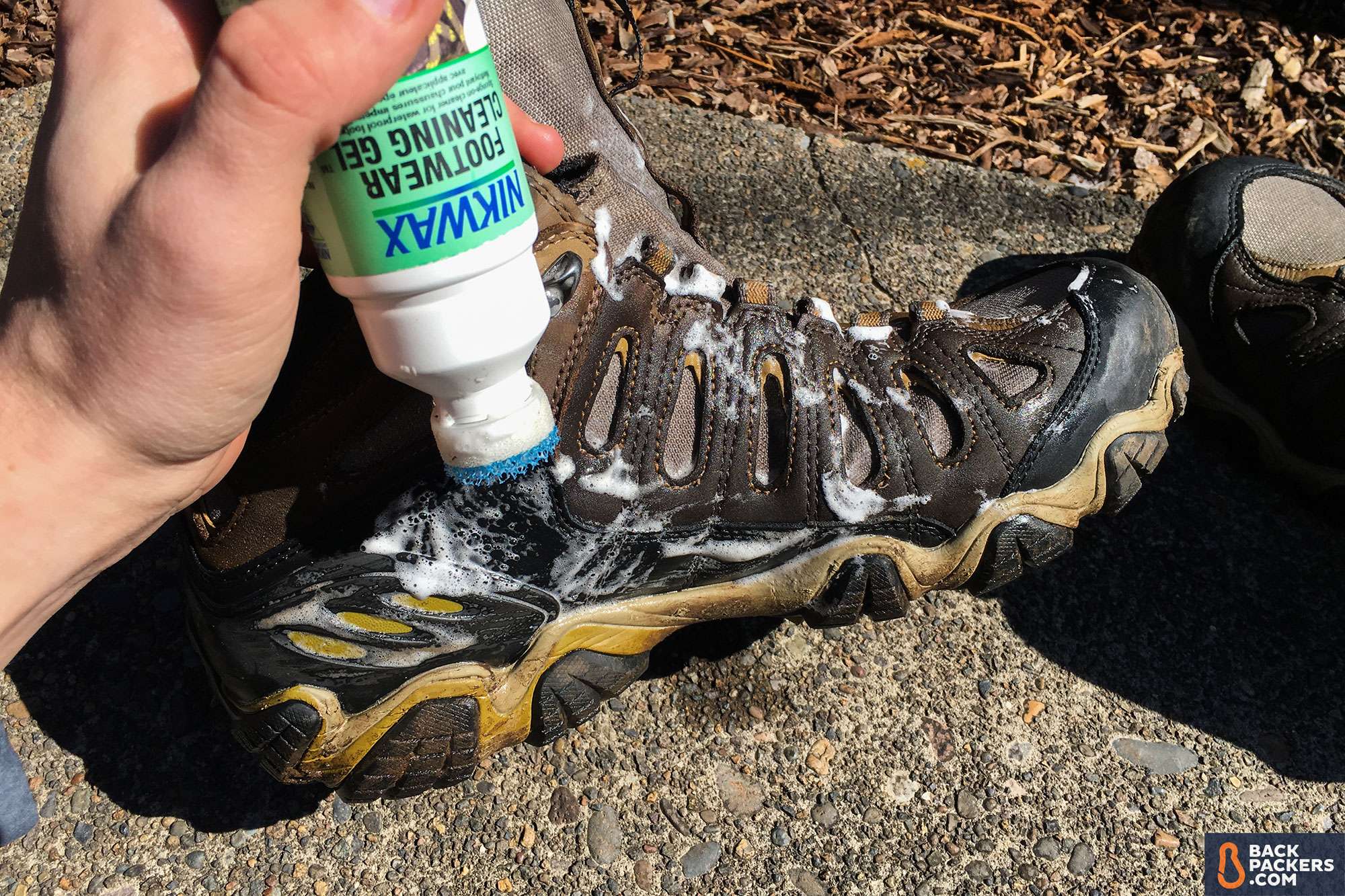
A quick wash won't do for a well-traveled pair of boots. In order to properly clean your footwear, remove the laces and break out the scrubbing brush. Work out the grime from all fabric and leather surfaces, then rinse those shoes clean!
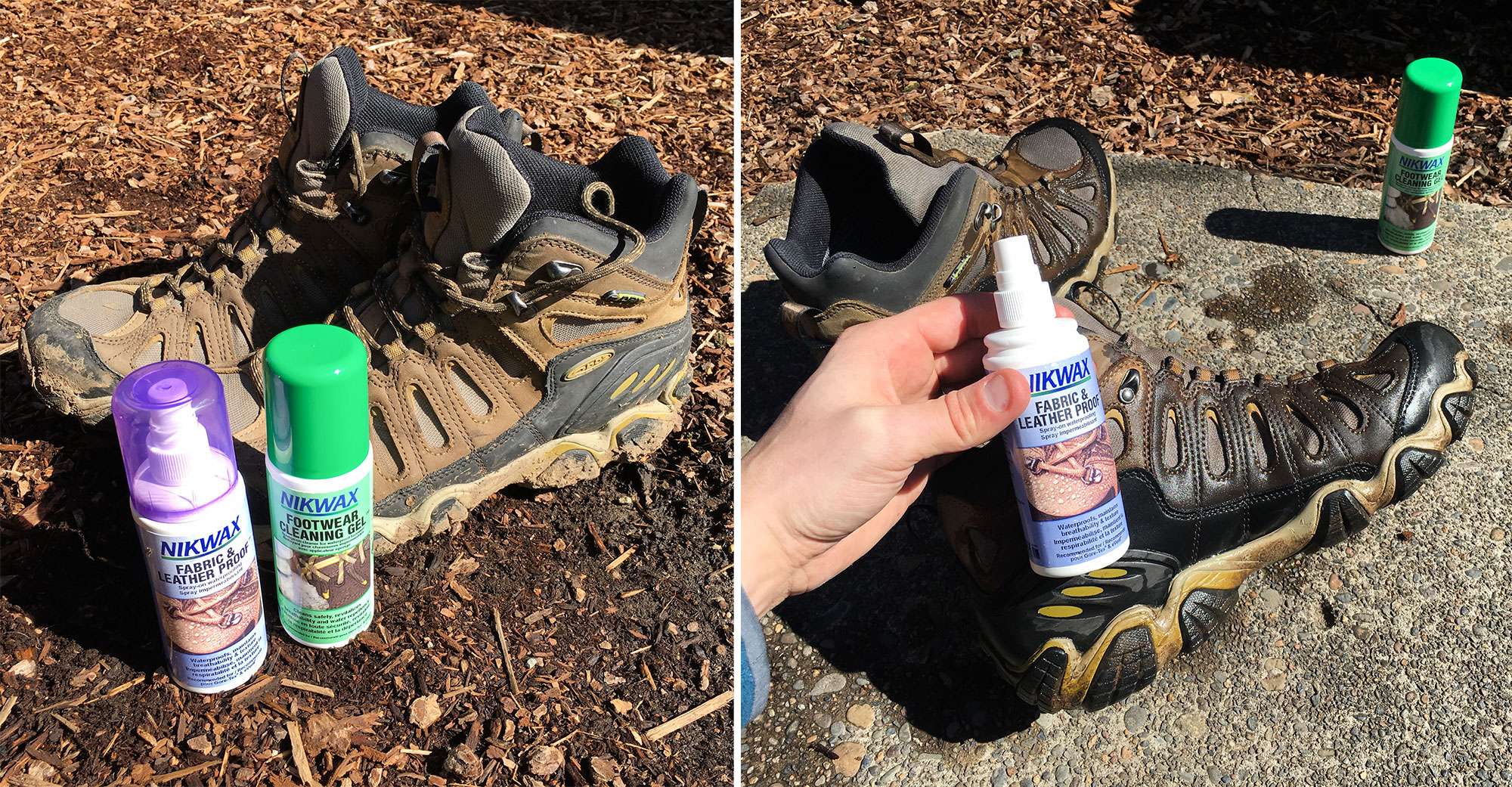
Once clean, treat the breathable fabric of your shoes like you would the synthetic materials of a jacket or backpack with waterproofing spray (steps above).
Leather, however, requires special treatment. If left unclean and untreated, the leather of your boots will dry out and crack, resulting in a leaky situation. Use leather-specific cleaners and waterproofing waxes to keep your boots silky smooth like a baby cow's bottom.
Do we do this? Only sometimes. If you want your (probably expensive) boots to last 10+ years and retain their functionality the whole way through, you should definitely take care of them.
Backpackers.com Affiliate Policy: This guide contains affiliate links, which help fund our website at no extra cost to you. When you click on these links and make a purchase, we may earn a small commission, and this directly supports the creation of our gear reviews, guides, and other outdoor content. Learn more about our affiliate policy here.




